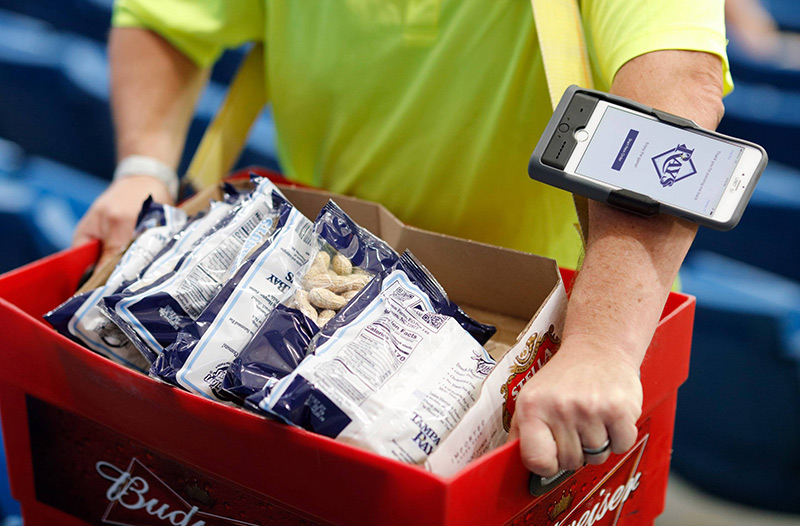“无现金社会”对商业有害?在美国可能如此

|
无论是在美国还是在国际上,都有越来越多的人开始争论,在线下的面对面交易中,企业和商户是否还有必要收现金。 美国的旧金山和费城已经明令禁止商户拒收现金的行为,理由是这些商户涉嫌歧视没有银行账户的低收入人群。整个新泽西州也出台了类似规定。另外,美国国会也引入了两项法案,拟禁止商家拒收现金的行为。 世界银行也表示,无现金商业在国际上的兴起,很可能导致新兴市场国家的很多消费者和小企业被边缘化,因为很多人可能没有银行账户,很多小商家也可能接触不到可靠的电子支付技术。 当然,无现金经济也有很多好处,比如安全、便利、易于开展业务等等。然而相比这些好处,更值得人担忧的,是一个无现金的社会很可能将经济基础薄弱的人抛在后头。 作为全球最大的数字和实体货币支付服务商之一(去年的交易额超3000美元),正方两反的观点我都是能听到的。然而不管一个人对平等问题怎么看,我们都应该以更务实的角度看待这场辩论。我认为如果对无现金经济推动得太猛、太快,对企业是有百害无一利的。如果一家企业拒绝接受现金,那就等于放弃了世界上的很多钱不赚。 事实上,目前全球的大多数货币交易仍然以现金形式进行。世界银行的数据显示,全球的小型零售企业平均每年交易的现金达19万亿美元——几乎相当于全球 GDP的四分之一。使用现金交易的并非只有贫困人口和低收入国家。根据全球安全公司G4S的数据,在欧洲,去年所有的线下销售有79%是通过现金交易的,较2016年的60%甚至还有所上升。 据旧金山联邦储备银行计算,在美国,尽管网购市场增长迅速,但还是有77%的支付是面对面完成的,其中现金支付又占了39%。据美国联邦存款保险公司估计,2017年,在840万个美国家庭中,约有1400万名成年人是“无银行账户者”,也就是既没有支票户头,也没有储蓄账户。 无现金听起来是一件简单的事情,但实际上,它需要与一张借记卡相连,或者将手机钱包与银行账户相连,此外还要有必要的销售点技术和网络接口。目前,全球约有17亿名成年人没有可以用于支付和储蓄的交易账户。换句话说,要想建成普及全球所有人的无现金经济,目前还差得很远。 只要在开罗或内罗比熙熙攘攘的市场上走走,就可以看出,当前的科技发展还没有能够满足很多人做生意的需要。比如在肯尼亚,所谓的“无分支银行”服务非常流行,M-Pesa移动钱包的日均交易量达到1600余万次。但由于缺乏销售点基础设施,很多肯尼亚人在购买日用商品前,只能先将移动账户里的钱兑换成现金。 在全球范围内,各国的经济发展有快有慢,消费者需求和可用技术千差万别,任何一种方法都难以迅速成为主流。 在许多国家,即使人们已经有能力在线购物,他们仍然经常需要用到现金。有鉴于此,西联打造了一套系统,使亚洲、非洲、南美洲的消费者既能够登录亚马逊进行海淘,同时又可以用当地货币与人面对面交易。这也给西联带来了很多潜在客户,包括亚马逊在内的一些大企业都乐于使用这套系统。 在美国,目前各地、各州乃至联邦层面都在出台禁止企业拒收现金行为的相关规定,这不仅引发了一场激烈的辩论,同时也让人更加关注庞大的电子支付基础设施。这些基础设施花了几十年才建立起来,为消费者在线购物、自动结算、在线预订酒店等带来了极大的便利性。虽然很多人认为平顺的移动支付是理所应当有的,但也并非所有人都这么看。 未来只有当我们有了更多的支付选项、更多的消费选择时,全世界的人民和企业才会迎来更多的机会。只有我们创新思考支付生态系统问题,这一切才有可能发生。另外,实体货币领域也是有创新空间的。比如你可以想象一下,内置了射频识别芯片的“智能现金”,必定能够大大提高支付的安全性,减少被伪造的机率。 金融业应该加快推进包容性创新,为消费者提供更多解决方案,不管他们属于金融服务客户群的上层还是底层。金融业应该以开放的心态,迎接一个现金与数字支付共存的世界。 金融、科技行业和政府部门领导人应该共同努力,重新思考支付创新的未来,首先要做的,就是要把金融的包容性作为一个核心价值。这对企业来说,不仅是唯一正确的做法,也是确保未来全面参与全球经济的唯一途径。(财富中文网) 本文作者贺博睿(Hikmet Ersek)是西联公司总裁兼首席执行官。 译者:朴成奎 |
There’s a growing debate across the U.S., and internationally, about whether businesses should be required to accept cash in face-to-face transactions. San Francisco and Philadelphia have banned cashless-only retailing, arguing that such businesses discriminate against low-income people who might not have bank accounts. The entire state of New Jersey has done likewise. And two bills that would ban cashless stores have been introduced in Congress. Meanwhile, the World Bank makes the case that the international rise of cashless commerce threatens to marginalize too many consumers and small businesses in emerging-market countries because people may not have bank accounts and merchants may not have access to reliable electronic payment technology. There are compelling security, convenience, and business arguments for going cashless, of course. But such benefits would not outweigh the cost to society of leaving economically vulnerable people behind. As CEO of one of the world’s largest digital and physical money movers (over $300 billion last year), I can see both sides of the cashless debate. But regardless of one’s view on inequality, there’s also a more pragmatic way to frame the debate. Pushing too hard and too fast toward a cashless economy is simply bad for business. If a company refuses to take cash, that leaves a lot of the world’s money on the table. The fact is much of the world’s money still changes hands as cash. Data from the World Bank shows that small retailers transact $19 trillion in cash a year—nearly one-fourth of global GDP. And that’s not just in poor neighborhoods or low-income countries. In Europe, according to the global security company G4S, an estimated 79% of all point-of-sale transactions were conducted in cash last year—which was actually up from 60% in 2016. In the U.S., the Federal Reserve Bank of San Francisco has calculated, even as online shopping continues to grow, 77% of payments are made in person, with cash accounting for 39% of the volume. And the Federal Deposit Insurance Corporation estimated that in 2017, 14 million adults in 8.4 million U.S. households were “unbanked”—lacking a checking or savings account. Going cashless sounds simple but, in reality, it requires access to a debit card or mobile wallet linked to a bank account, and the necessary point-of-sale technology and network access for businesses. Around 1.7 billion adults globally do not have access to a transaction account that can be used to receive payments and make deposits. In other words, the world is still a long way from having a completely cashless economy that would function for everyone. All it takes is a walk through a bustling market in Cairo or Nairobi to see technology’s failure to accommodate the way many people want to do business. In Kenya, where so-called branchless banking is broadly available, and 16 million transactions happen daily on the M-Pesa mobile wallet, consumers still must often convert to cash before they can pay for many daily goods because the point-of-sale infrastructure simply isn’t there. The global economy and the global spectrum of customer needs and accessible technologies are too varied to try to move too fast on any one approach. In many countries, even where people have the ability to make online purchases, they often still need to need to pay for them in cash. That is why Western Union created systems enabling tens of millions of consumers across Asia, Africa, and South America to shop on Amazon’s website globally and pay in-person in the local currency. That’s a lot of new potential customers—business that companies like Amazon are happy to have. Here in the U.S., efforts at the local, state, and (now) federal level to ban cashless commerce have spurred a healthy debate and are making people more mindful of the gigantic electronic payment infrastructure that has been built behind the scenes in recent decades to enable conveniences like online shopping, automatic bill paying, and online hotel bookings. While many take these frictionless payments for granted, not everyone enjoys that privilege. A future with more payment options and more consumer choices is a future of vastly expanded opportunities for the world’s people and businesses. But it can happen only if we demand new ways of thinking about the payments ecosystem. There’s even room for innovation in physical currency, too: Imagine issuing smart cash embedded with RFID chips that would improve security and reduce counterfeiting. The financial industry should step up to more inclusive innovation and offer consumers solutions regardless of where they live on the financial-services spectrum, and embrace the complexity of a world where cash and digital payments coexist far into the future. Leaders from the financial, technology, and government sectors need to come together and rethink the future of payments innovation, starting with financial inclusion as a core value. It’s not only the right thing to do—for businesses, it’s the only way to ensure full participation in the global economy. Hikmet Ersek is president and CEO of The Western Union Company. |













